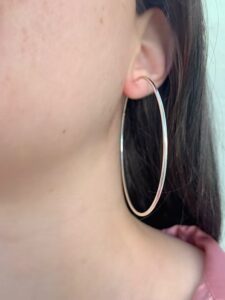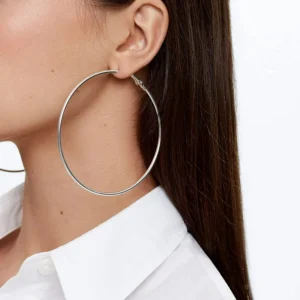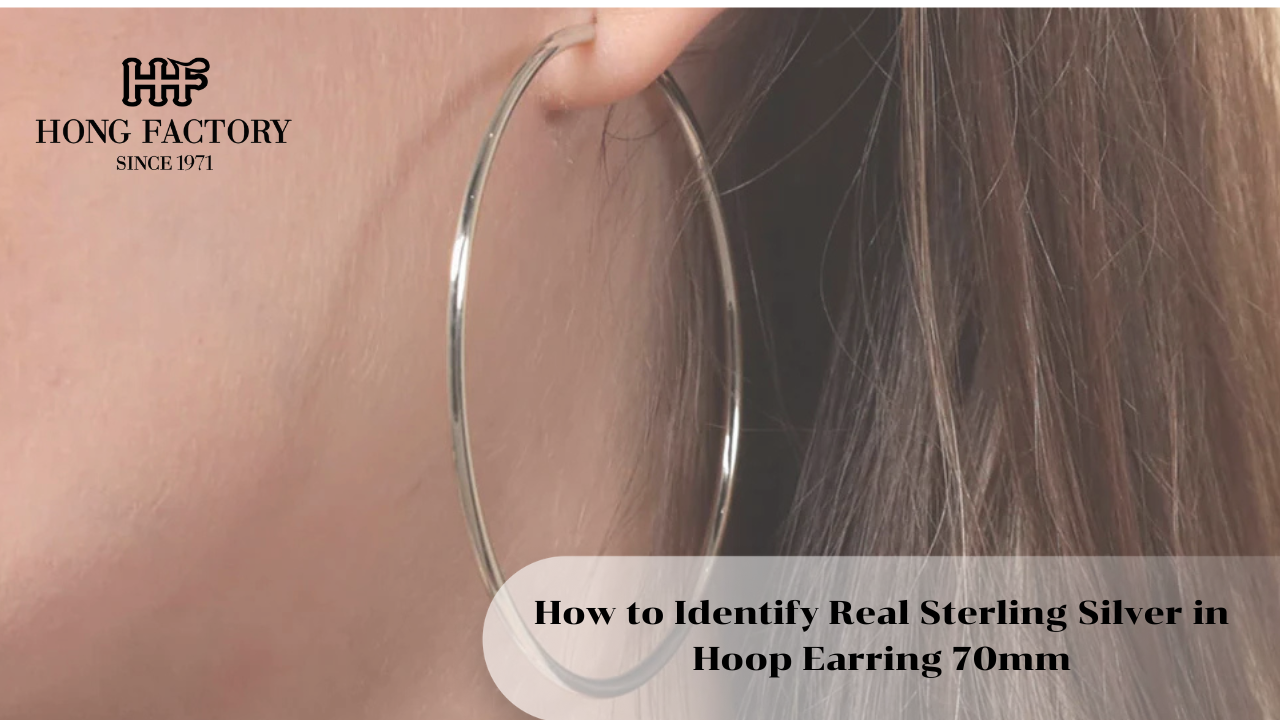When shopping for the perfect pair of hoops, the Silver Hoop Earring 70mm stands out for its timeless elegance and versatility. However, with so many imitations on the market, it’s important to know how to tell if your silver hoops are made from real sterling silver or just plated with a silver-like coating. In this guide, we’ll walk you through practical and reliable ways to identify authentic sterling silver so you can buy with confidence and keep your jewelry collection genuine. Is sterling silver real
Understanding What Sterling Silver Really Is

Before identifying authenticity, it helps to understand what sterling silver actually means. Pure silver (also known as fine silver) is 99.9% silver, but it’s too soft to be used in everyday jewelry. That’s why jewelers mix it with a small amount of other metals usually 7.5% copper to create sterling silver. This alloy is durable, resistant to tarnish, and retains silver’s brilliant shine.
Authentic sterling silver jewelry is typically stamped or marked with a purity hallmark, such as “925,” indicating 92.5% silver content.
How to Check Authenticity of Silver Hoop Earring 70mm
When buying a Silver Hoop Earring 70mm, there are several simple tests you can perform to ensure it’s made from real sterling silver rather than imitation or plated metal.
1. Look for the Hallmark Stamp
The first and easiest step is to look for a hallmark or purity mark. Genuine sterling silver hoops will usually have small imprints such as:
- 925 or .925 (indicating 92.5% silver content)
- Sterling Silver or Sterling
- SS (an abbreviation for sterling silver)
These marks are often found on the inner side of the hoops or on the clasp. If your earrings don’t have a visible hallmark, it doesn’t automatically mean they’re fake but it’s worth verifying through other methods.
2. Perform the Magnet Test
Silver is not magnetic. Hold a strong magnet close to your hoops. If they stick firmly to the magnet, they’re likely made of another metal, such as nickel or stainless steel. A slight pull could indicate minor alloy presence, but strong magnetic attraction is a red flag.
3. Check for Tarnish
One unique property of real sterling silver is that it tarnishes over time due to a natural reaction with sulfur in the air. Fake silver, especially plated metals, may remain shiny or show peeling instead of darkening.
If your Silver Hoop Earring 70mm develops a slight dark or yellowish tint, don’t worry it’s a sign of authenticity. Tarnish can easily be cleaned with a soft polishing cloth.
4. Conduct a Smell Test
Real silver has no noticeable odor. If your hoops smell metallic or like chemicals, they likely contain a higher level of base metals or other alloys that aren’t genuine silver.
5. Use the Ice Test
Silver is an excellent conductor of heat. To try this test, place an ice cube directly on your hoop earrings. If the ice melts quickly, it’s likely genuine sterling silver. If it melts slowly, the metal may not be silver.
6. Try the Cloth Test
Rub your earrings with a soft white cloth. If you notice black marks appearing on the cloth, it’s a good sign the dark residue comes from silver oxide, a natural reaction of sterling silver to air. Fake silver or plated jewelry won’t leave such marks.
7. Acid or Chemical Test (Advanced)
Professional jewelers often use nitric acid to confirm authenticity. A small drop is applied to a discreet spot; real silver will turn creamy white, while fake metals turn green or yellow. However, this test should be performed carefully or by a professional to avoid damaging your jewelry.
Distinguishing Between Sterling Silver and Silver-Plated Jewelry

It’s common for counterfeit products to be coated with a thin layer of silver over cheaper metals. Silver-plated jewelry looks shiny at first but fades over time, revealing the base metal beneath. In contrast, sterling silver maintains its luster and can be polished back to perfection repeatedly.
To differentiate:
- Sterling silver is solid throughout, while plated items have a thin silver layer.
- Sterling silver is heavier and more substantial.
- Plated pieces often have a uniform, artificial shine.
When buying high-quality hoops, always ask the seller if they’re made from solid sterling silver, and request documentation or a guarantee if available.
Why Authentic Sterling Silver Matters
Choosing real sterling silver is not only about appearance but also about quality, longevity, and skin safety. Fake metals can cause irritation or allergic reactions, while genuine silver is hypoallergenic and suitable for sensitive skin. Additionally, authentic silver jewelry retains its value and can last a lifetime with proper care.
The Silver Hoop Earring 70mm crafted from genuine sterling silver will feel lightweight yet durable, maintaining its gleam through years of wear.
Caring for Your Sterling Silver Hoops
Once you’ve verified your earrings are real sterling silver, proper care helps preserve their beauty:
- Store properly: Keep them in a dry, airtight pouch or jewelry box.
- Clean regularly: Use a silver polishing cloth or mild soap and water.
- Avoid harsh chemicals: Perfumes, lotions, and sprays can accelerate tarnish.
- Wear often: Regular use actually helps prevent tarnish by keeping the metal’s surface polished naturally.
The Silver Hoop Earring 70mm is an elegant staple that deserves a place in every jewelry collection. However, ensuring authenticity is essential for maintaining both quality and value. By checking for hallmarks, performing simple tests, and purchasing from reputable sellers, you can confidently enjoy your silver hoops knowing they’re truly genuine.
Authentic sterling silver doesn’t just shine it tells a story of craftsmanship, durability, and timeless elegance. When you wear real silver, you wear authenticity, confidence, and enduring beauty.
